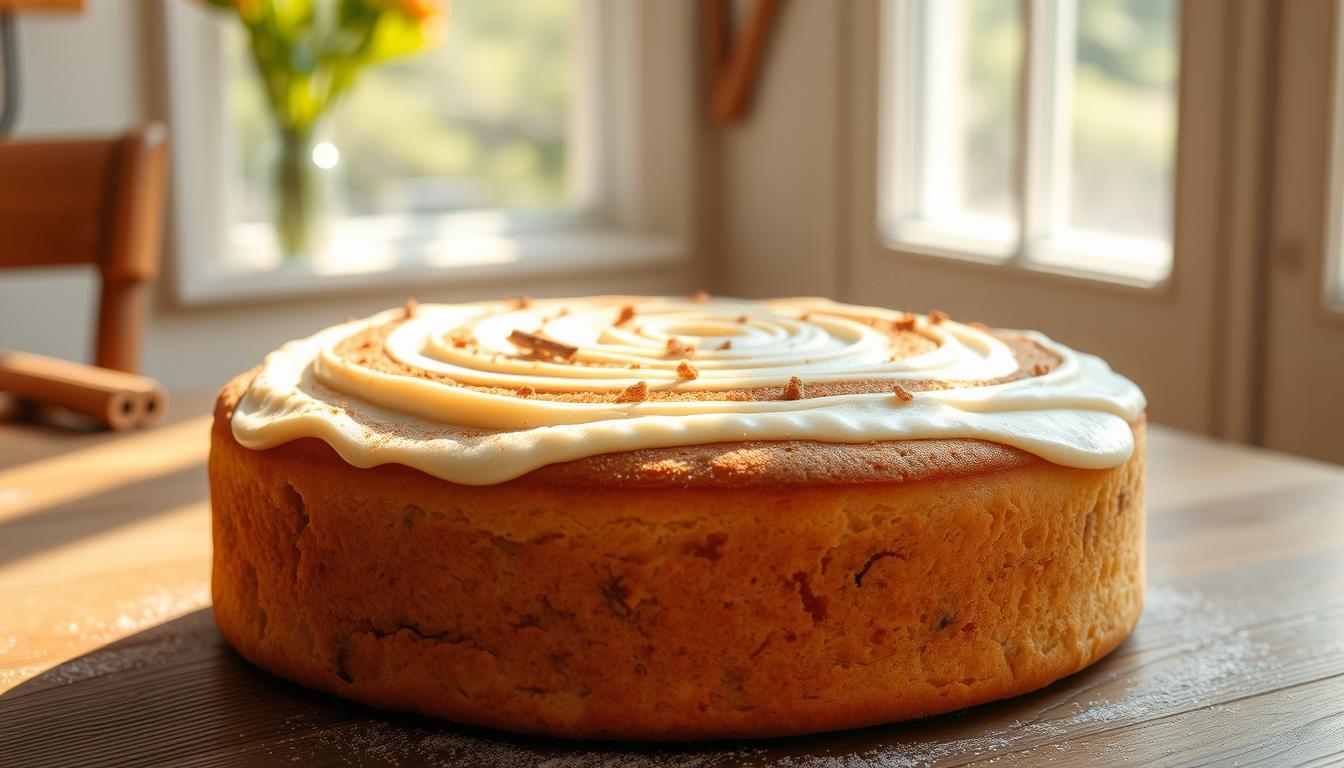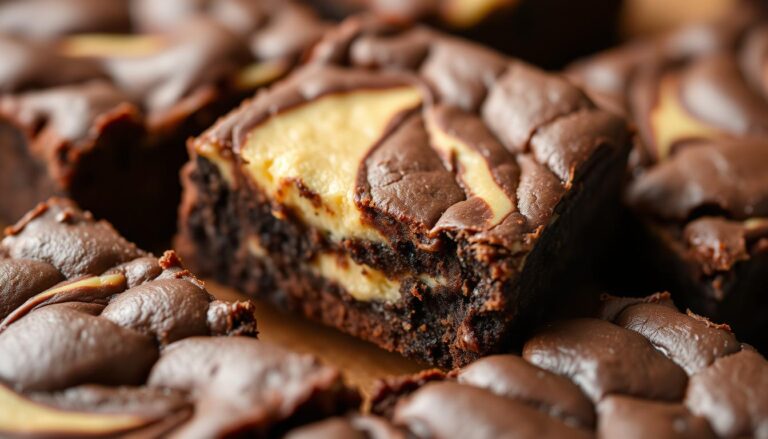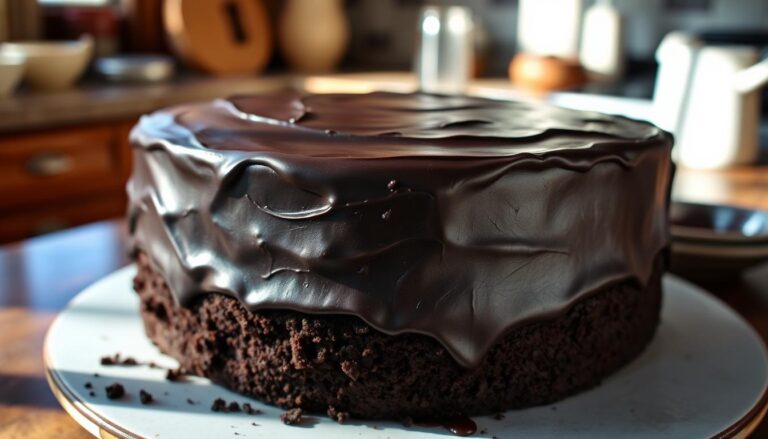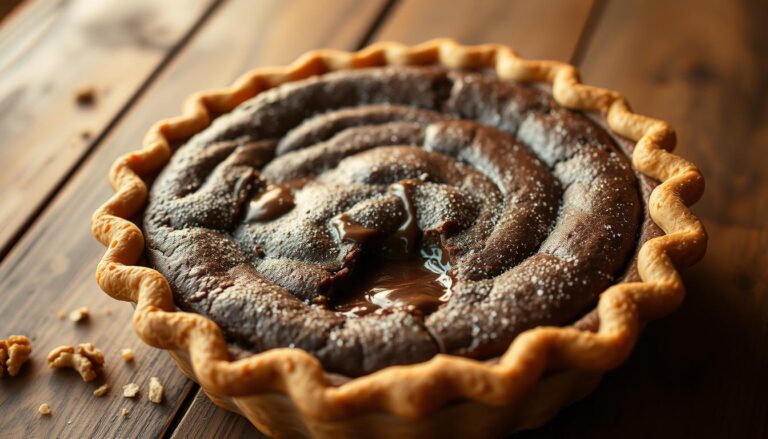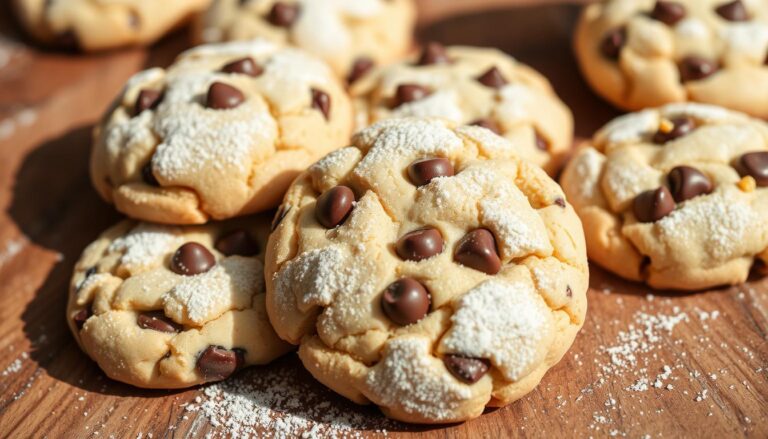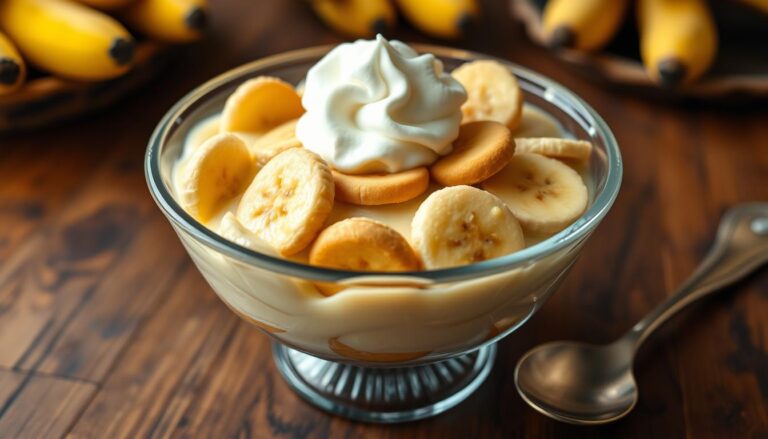Cinnamon Roll Cake: Best Recipe for a Delicious Treat
Imagine a dessert that combines the gooey warmth of freshly baked cinnamon rolls with the tender crumb of a classic sponge. This irresistible hybrid delivers swirls of brown sugar and spice, topped with a silky vanilla glaze that melts into every bite. Perfect for breakfast or dessert, it’s a crowd-pleaser that’s surprisingly simple to make.
What sets this recipe apart? It skips the fuss of yeast dough while keeping the iconic flavors intact. You’ll layer a buttery batter with a cinnamon-sugar ribbon, then bake it into a golden masterpiece. Real recipe testers rave about its moist texture and how the vanilla extract enhances the caramel-like notes.
Whether you’re hosting brunch or craving something sweet, this dish promises restaurant-quality results without advanced skills. The icing drizzle adds both visual flair and a creamy finish, making it ideal for holidays or casual gatherings. Ready to transform your kitchen into a bakery?
Key Takeaways
- Discover a signature recipe blending cinnamon roll flavors with cake texture
- Enjoy balanced sweetness with aromatic spices and rich vanilla icing
- Simplify baking using common pantry staples like brown sugar
- Follow tested steps for consistent, moist results every time
- Impress guests with a visually stunning dessert in under an hour
Introduction to This Delicious Cinnamon Roll Cake
Transform your favorite breakfast pastry into a shareable dessert with this innovative twist. Unlike traditional recipes requiring yeast or lengthy prep, this version uses all-purpose flour and a clever batter-swirl method. The result? A tender crumb layered with ribbons of spiced sweetness – no kneading or proofing needed.
What Makes This Recipe Unique?
Three factors set this treat apart. First, the batter blends cake-like softness with the signature swirls of a classic roll. Second, precise measurements of ground cinnamon and brown sugar create bold flavor without overpowering. Finally, skipping yeast cuts prep time in half while maintaining that nostalgic aroma.
Overview of Flavor and Occasion
Warm spices mingle with vanilla in every bite, thanks to a balanced mix of all-purpose flour, butter, and cinnamon. The texture stays moist for days, making it ideal for:
- Sunday brunches with coffee
- Holiday potluck centerpieces
- After-school snacks with milk
Always preheat your oven properly – this ensures even baking and that iconic golden crust. Whether served warm or at room temperature, it delivers comfort in every slice.
Essential Ingredients and Pre-Bake Preparation
Perfecting your dessert starts with precision in the prep stage. Gather these core components to build layers of flavor and texture. Proper measurement techniques and ingredient prep separate good bakes from bakery-level masterpieces.
Breakdown of Dry and Wet Ingredients
Dry elements like flour (2 ½ cups), baking powder, and spices form the base. Always spoon flour into your measuring cup – packing it down adds 25% extra! Combine these with granulated sugar for structure.
Wet ingredients bind everything together. Use butter softened to room temperature (¾ cup) and whole milk (1 cup) for richness. Cold eggs? Place them in warm water for 5 minutes to take off the chill.
Tips on Measuring and Mixing for Best Results
Room-temperature dairy blends smoother, preventing a dense crumb. When combining wet and dry mixtures, stop stirring once streaks disappear – overworking activates gluten and toughens the batter.
For swirls that hold shape, mix brown sugar (1 cup) with melted butter separately. Layer half the batter, spread the filling, then repeat. This method creates defined ribbons without muddying flavors.
Step-By-Step Baking Process for Your Cinnamon Roll Cake
Mastering this crowd-pleasing dessert begins with precision in each step. Follow this tested method to ensure golden edges, moist layers, and swirls that hold their shape.
Preheating the Oven and Preparing Your Pan
Start by heating your oven to 350°F. This temperature allows even cooking without drying the batter. While it warms, coat a 9×13-inch pan with nonstick spray. For extra insurance, line the bottom with parchment paper.
Mixing the Batter and Assembling the Filling
Whisk dry ingredients in one bowl. In another, blend softened butter, sugar, and vanilla. Alternate adding milk and dry mix to wet components. Stop stirring when no flour streaks remain.
Create the filling by combining melted butter, brown sugar, and cinnamon. Spread half the batter into your prepared pan. Dollop filling evenly across the surface before adding the remaining batter.
Swirling Techniques to Create a Marbled Effect
Use a butter knife to carve gentle figure-eight patterns through the layers. Avoid overmixing – three passes create defined ribbons. Bake 35-40 minutes until a toothpick emerges clean. Let cool slightly before drizzling with glaze.
Expert Tips for Achieving a Moist and Flavorful Cake
Elevate your baking game with professional techniques that guarantee perfect texture and flavor balance. Small adjustments in preparation and baking methods make all the difference between good and exceptional results.
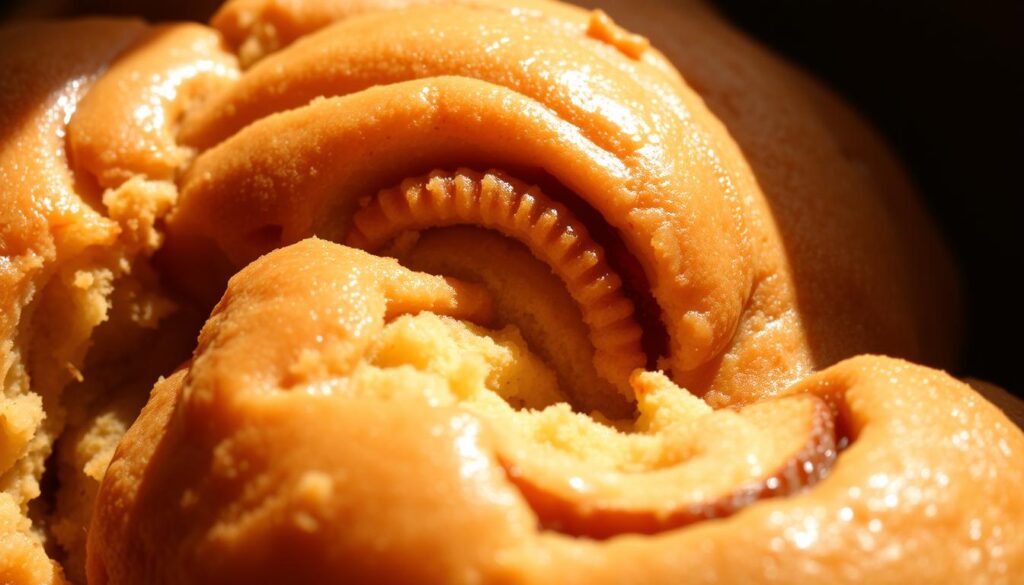
Avoiding Common Baking Mistakes
Always check expiration dates on leavening agents. “Baking powder loses 50% of its potency after six months,” warns pastry chef Lisa Yang. Use fresh extract for maximum aroma – imitation versions can leave artificial aftertastes.
When mixing the filling, combine melted butter and brown sugar in a separate bowl first. This prevents it from sinking to the bottom during baking. For ideal consistency, measure tablespoons precisely – too much liquid creates soggy layers.
Optimal Oven Settings and Timing
Position racks in the middle third of your oven to ensure even heat distribution. Bake at 350°F – higher temperatures cause the top to brown too quickly while leaving the center underdone.
Rotate your pan halfway through cooking if your oven has hot spots. Test doneness by inserting a toothpick near the center rather than the edges. Let it cool 15 minutes before slicing to set the swirls properly.
Troubleshooting and Recipe Variations
Baking success hinges on smart adjustments when ingredients or equipment don’t cooperate. Whether adapting to pantry shortages or tackling oven quirks, these solutions keep your dessert on track without compromising flavor.
Substitutions and Adjustments for Different Ingredients
Out of all-purpose flour? Swap 1:1 with boxed cake mix for extra lift. Reduce salt by half if using salted butter. For nutmeg lovers, blend ½ tsp ground nutmeg into the cinnamon-sugar mixture.
Cut the recipe in half using an 8-inch pan. Bake 25-28 minutes – smaller batches cook faster. If doubling, add 5-7 minutes and rotate pans midway for even heat.
Handling Oven Variability and Rise Time Issues
Uneven browning? Place a pizza stone on the lower rack to stabilize temperatures. If edges darken too quickly, tent foil over the pan. For dense texture, check your baking powder’s freshness – outdated agents won’t lift properly.
“Ovens can vary by 25°F,” notes baker Emily Carter. “Use an oven thermometer and adjust time accordingly.” Track doneness at the 30-minute mark, then every 3 minutes until set.
Mastering Your Homemade cinnamon-roll-cake
Presentation transforms your creation from tasty to unforgettable. A few simple techniques let you showcase the homemade cinnamon roll flavors while making it the center of attention at any gathering.
Artful Display for Maximum Impact
Slice strategically to highlight the spiral pattern. Use a serrated knife and cut near the center where swirls are most defined. Wipe the blade between cuts for clean edges that reveal golden-brown layers.
Drizzle icing while the dessert is slightly warm – the glaze will cascade into crevices for a professional finish. For a light touch, use a squeeze bottle or zip-top bag with a tiny corner snipped off.
Pair slices with fresh berries or mint sprigs. The vibrant colors contrast beautifully against the caramelized center. Serve on white plates to make the cinnamon patterns pop, or use rustic boards for casual brunches.
Want to pin this idea? Share your masterpiece under natural light for social media-worthy photos. Warm individual portions in a 350°F oven for 3 minutes before serving – it revives the gooey texture perfectly.
Pro tip: Dust with powdered sugar using a fine-mesh sieve. This light coating adds elegance without overpowering the spices. Store leftovers covered at room temperature – the flavors deepen overnight.
Conclusion
Bring your baking journey full circle with this foolproof finale. Using room temperature ingredients ensures even mixing, while serving the dessert slightly warm amplifies its cozy spice notes. Always bake cake at oven 350 for that golden crust and tender crumb balance.
Dust with powdered sugar just before slicing to highlight the swirls. Leftovers stay moist up to 3 days when wrapped tightly – though it rarely lasts that long. For peak freshness, reheat slices briefly at oven 350 to revive the gooey texture.
This homemade cinnamon creation shines brightest when shared. Whether you make cinnamon swirls for brunch or afternoon treats, its aroma alone will draw smiles. Snap a photo of your masterpiece and tag friends who need this recipe – because joy tastes better when passed around.
FAQ
Can I substitute all-purpose flour with a gluten-free alternative?
Yes, you can use a 1:1 gluten-free flour blend. Ensure it contains xanthan gum for proper texture. Adjust mixing time to avoid overworking the batter.
Why is preheating the oven to 350°F important?
Preheating ensures even baking from the start. A consistent temperature prevents uneven rise or dryness, especially crucial for layered batters with brown sugar swirls.
How do I prevent the swirls from sinking into the batter?
Layer half the batter first, then spread the cinnamon-sugar mixture evenly. Use a knife to gently swirl—don’t overmix. This creates a marbled effect without blending the layers.
Can I use margarine instead of butter for the filling?
Butter provides richer flavor, but margarine works in a pinch. Opt for a high-fat version to mimic the texture. Avoid spreads with added water, as they may alter moisture levels.
How do I know when the cake is fully baked?
Insert a toothpick into the center—it should come out clean or with a few crumbs. The edges will pull away slightly from the pan, and the top will spring back when lightly pressed.
What’s the best way to store leftovers?
Keep it in an airtight container at room temperature for up to 3 days. For longer storage, wrap slices tightly and freeze. Thaw overnight or warm in the microwave for 15–20 seconds.
Can I reduce the sugar without affecting texture?
Reducing sugar by 25% is safe. However, the brown sugar filling contributes moisture. For a lighter option, try coconut sugar but expect a slightly denser crumb.
Why did my cake turn out dry?
Overmixing or overbaking are common culprits. Measure flour accurately (spoon and level), and set a timer. Check for doneness a few minutes early if your oven runs hot.
Can I prepare the batter in advance?
Mix dry and wet ingredients separately, then combine just before baking. Letting batter sit too long can activate the baking powder early, leading to a flat texture.
How do I adjust baking time for a dark-colored pan?
Dark pans conduct heat faster. Reduce oven temperature by 25°F and check for doneness 5–10 minutes earlier to avoid overbrowning the edges.

